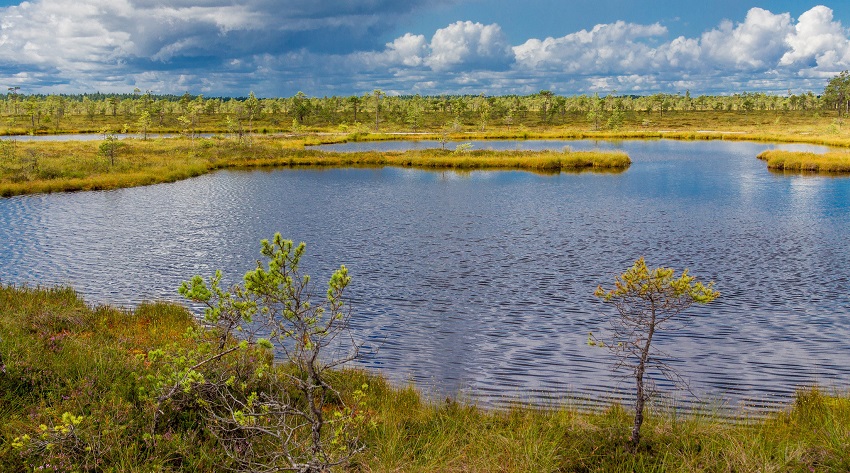The purpose of the Ramsar Convention is to protect the wetlands of the world, which are in danger of disappearing due to drainage, pollution, and economic uses

Each year, on 2 February, the World Wetlands Day is celebrated. On that date in the year 1971, the convention for the protection of the world’s wetlands was signed in Ramsar, Iran. The convention entered into force in 1975.
The purpose of the Ramsar Convention is to protect the wetlands of the world, which are in danger of disappearing due to drainage, pollution, and economic uses. Wetlands are defined as areas that are permanently excessively moist (e.g. mires) or temporarily flooded (e.g. floodplains), as well as inland waters and shallow sea and coastal areas up to 6 metres deep. Together with the wetlands, the habitats and species characteristic of them would be lost as well.
The convention emphasises the great economic role of the wetlands, especially as migration, resting, and nesting grounds of waterbirds. All the countries that have signed the convention must take measures to protect the wetlands and put forward at least one wetland for the list of wetlands of international importance.
In 2024, 172 parties are contributing to the protection of the wetlands; Estonia acceded to the convention in 1993. Back then, our only representative in the list of Ramsar wetlands of international importance was the Matsalu National Park. In 2024, there are 17 Ramsar sites in Estonia. Around the world, there are more than 2,500 Ramsar sites of international importance, with a total area of more than 257 million hectares. These figures change every year.
Every party to the convention chooses their own Ramsar sites and the designation is approved by a regulation of the government. Not every mire or bog can become a Ramsar site, but the designated area must meet the criteria of the convention. The site must be unique or rare, a habitat for endangered species; at least 20,000 waterbirds must use the wetland or it must be important for the conservation of fish species in the area, etc. [1].
The most important precondition for compliance with the Ramsar Convention is the management of the conservation of wetlands of international importance. This is conditional on the preparation of management plans.
The tasks arising from the objectives of the convention are handled in Estonia by the Estonian Ramsar Committee. The implementation of the convention is coordinated by the Nature Conservation Department of the Ministry of the Environment.
Last modified: 19.12.2024
___________________
[1] https://www.slideshare.net/anneliroosalu/ramsar-ja-soomaa-rp-agu-leivits-16335573